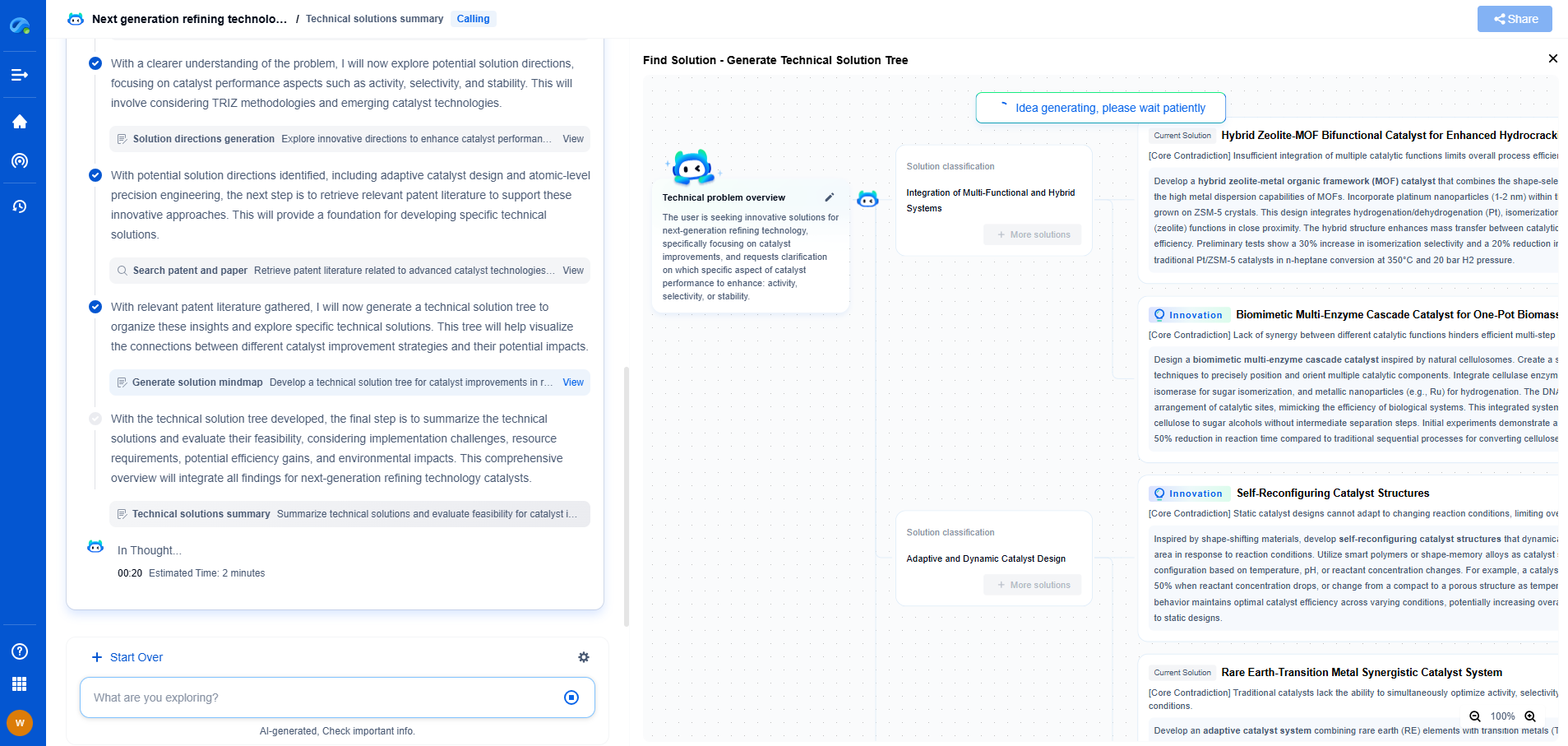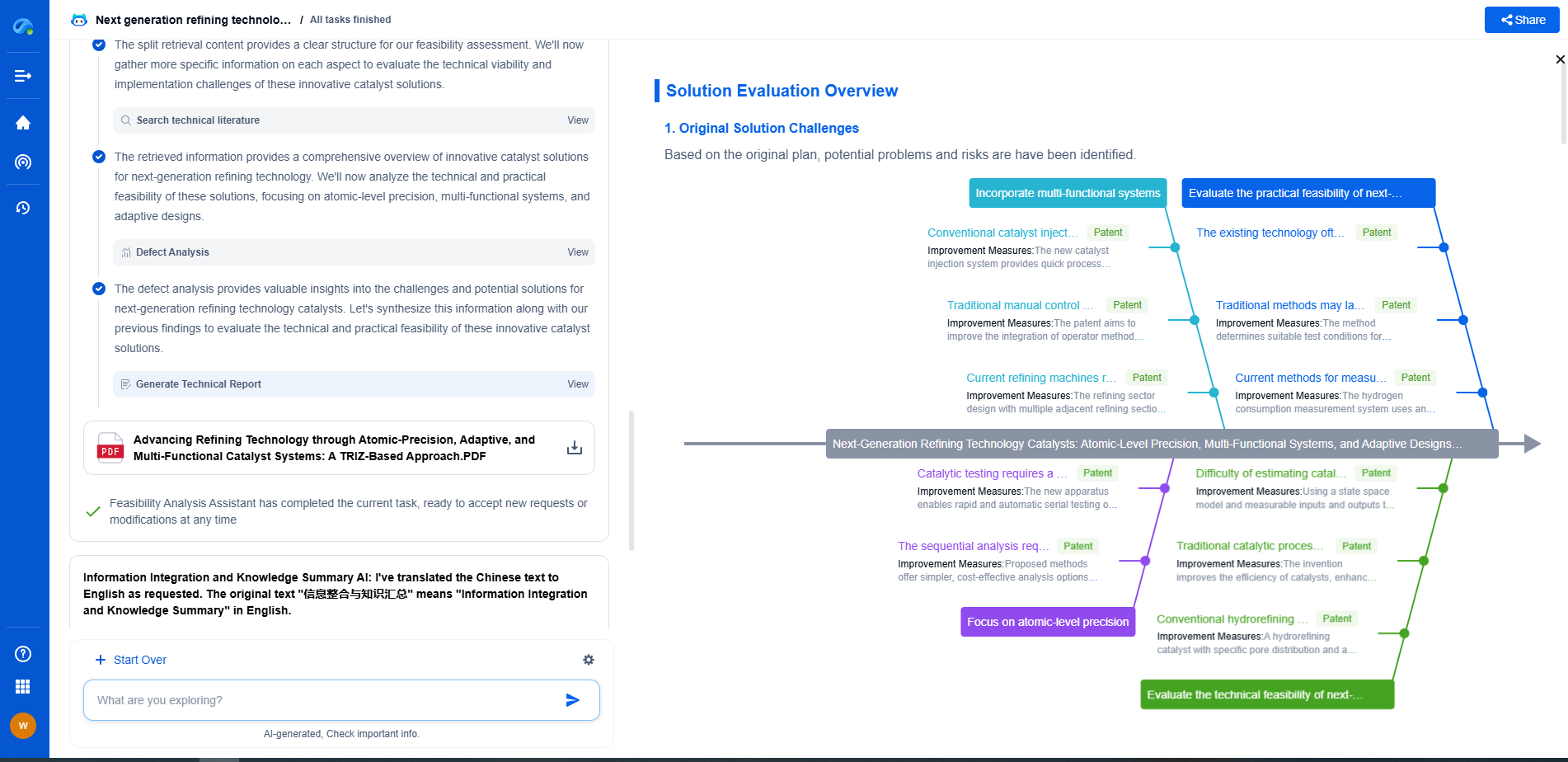Grid-Tied vs. Off-Grid Small Wind Turbines: Key Differences
JUN 26, 2025 |
When considering the use of small wind turbines to generate renewable energy for your home or business, you are often faced with a crucial decision: should you opt for a grid-tied system or an off-grid system? Both options have their unique advantages and challenges, and understanding the key differences between them is essential for making an informed choice. In this blog, we will explore the fundamental aspects of grid-tied and off-grid small wind turbines, their benefits, and the considerations you should keep in mind.
Understanding Grid-Tied Small Wind Turbines
Grid-tied small wind turbines are connected directly to the public electricity grid. This setup allows you to use wind energy generated by your turbine to power your home or business, while also having the option to draw electricity from the grid when wind conditions are not favorable. One of the most significant advantages of grid-tied systems is the ability to sell excess electricity back to the grid, often through a process called net metering. This can help offset your electricity costs and enhance the financial viability of your investment.
Moreover, grid-tied systems do not require batteries for energy storage, which can significantly reduce the initial investment and maintenance costs. However, the dependence on the grid means that during a power outage, your wind turbine will shut down for safety reasons, leaving you without power unless you have a backup system.
Exploring Off-Grid Small Wind Turbines
Off-grid small wind turbines function independently from the public electricity grid, making them an ideal choice for remote locations or areas where grid access is unreliable or unavailable. These systems rely on battery storage to capture and store energy generated when the wind is blowing, which can then be used when wind conditions are poor.
The autonomy provided by off-grid systems is a significant advantage, as it ensures a continuous power supply even during grid outages. However, off-grid systems typically require a larger initial investment due to the cost of batteries and the need for a backup power source, such as a generator, to cover periods of low wind.
Installation and Maintenance Considerations
The installation process for both grid-tied and off-grid small wind turbines involves several similar steps, including site assessment, permitting, and the physical mounting of the turbine. However, off-grid systems require additional components like batteries and charge controllers, which can complicate the installation process and increase costs.
Maintenance practices differ slightly between the two systems. Grid-tied systems generally have fewer components and therefore might require less frequent maintenance. In contrast, off-grid systems require regular monitoring of battery health and performance, which can lead to higher maintenance demands over time.
Environmental Impact and Sustainability
Both grid-tied and off-grid small wind turbines offer significant environmental benefits by reducing reliance on fossil fuels and decreasing carbon emissions. However, the environmental impact of each system can vary based on factors like system size, location, and wind conditions.
Grid-tied systems are often seen as more sustainable in regions where the grid is predominantly powered by renewable energy sources. In contrast, off-grid systems can provide a more sustainable solution in areas with limited access to clean grid power, as they allow for complete energy independence and a reduced carbon footprint.
Conclusion
Choosing between a grid-tied and off-grid small wind turbine depends largely on your specific energy needs, location, and budget. Grid-tied systems offer convenience and potential cost savings through net metering but depend on the grid for consistent power supply. Off-grid systems provide energy independence and reliability in remote areas but come with higher initial costs and maintenance requirements.
By understanding the key differences and evaluating your personal and environmental goals, you can make an informed decision that aligns with your sustainability objectives and ensures a reliable source of renewable energy for years to come.
Empower Your Wind Power Innovation with AI
In the fast-evolving landscape of wind turbine technology—where aerodynamic optimization, generator efficiency, and structural innovation are critical—staying ahead requires more than just expertise. It requires intelligent tools that accelerate R&D and protect your competitive edge.
Patsnap Eureka is your AI-powered research assistant, designed specifically for innovators like you working at the forefront of Wind Motors. Whether you're analyzing blade design trends, exploring novel gearbox architectures, or navigating complex global patent landscapes, Eureka streamlines the entire process with precision and speed.
👉 Experience how Patsnap Eureka can revolutionize your R&D and IP strategy. Request a demo today and power up your next breakthrough.
- R&D
- Intellectual Property
- Life Sciences
- Materials
- Tech Scout
- Unparalleled Data Quality
- Higher Quality Content
- 60% Fewer Hallucinations
Browse by: Latest US Patents, China's latest patents, Technical Efficacy Thesaurus, Application Domain, Technology Topic, Popular Technical Reports.
© 2025 PatSnap. All rights reserved.Legal|Privacy policy|Modern Slavery Act Transparency Statement|Sitemap|About US| Contact US: help@patsnap.com

